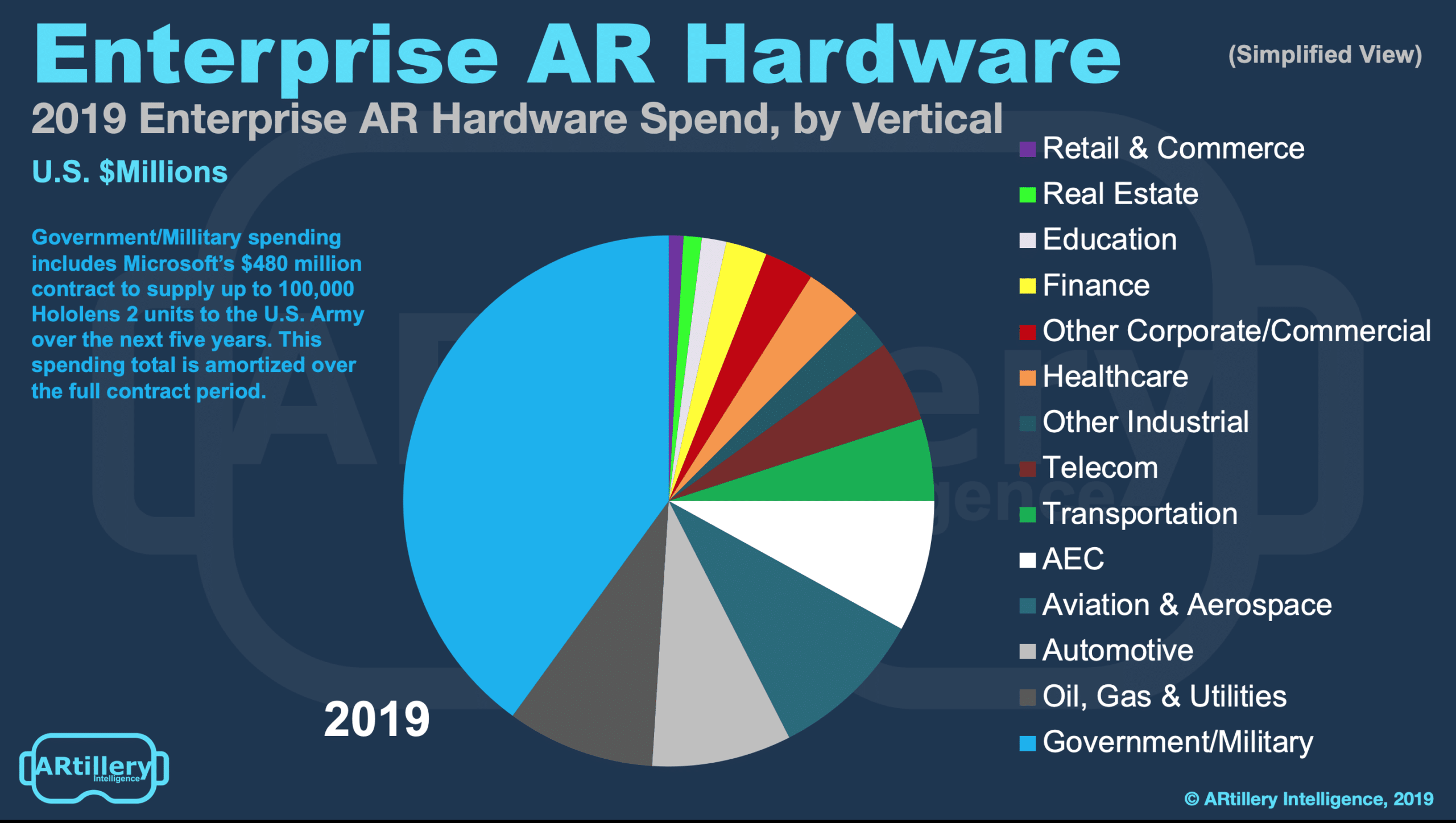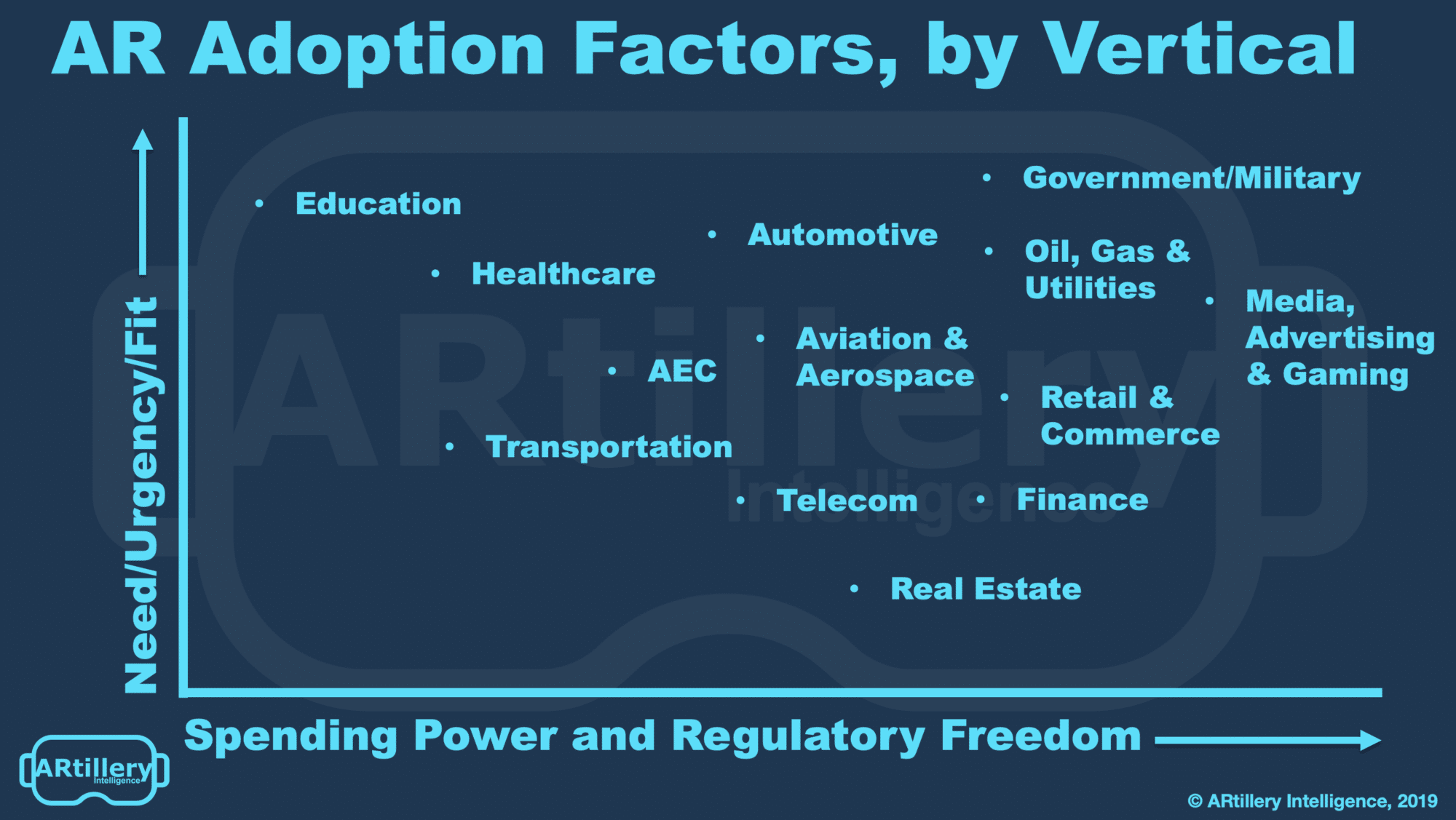
This post is adapted from ARtillery Intelligence’s latest report, Industrial AR: Benefits & Barriers. It includes some of its data and takeaways. More can be previewed here and subscribe for the full report.
One of AR’s proposed beneficiaries is the enterprise. That can take many forms including data visualization in corporate settings, or software to create customer-facing AR experiences for brands (B2B2C). Impact will also occur through AR visualization in industrial settings.
The latter includes things like assembly and maintenance in manufacturing facilities. The idea is that AR’s line-of-sight visualization can guide front-line workers. Compared to the “mental mapping” they otherwise do with 2D instructions, line-of-sight support boosts productivity.
This plays out through speed, effectiveness, error reduction and safety. These micro efficiencies add up to worthwhile bottom-line impact in large-scale operations. Macro benefits meanwhile include lower strain and turnover, leading to higher morale and institutional knowledge.
These benefits were examined in ARtillery February 2018 report, Enterprise XR: Impacting the Bottom Line. But since that analysis, we’ve tracked several growing challenges to AR’s viability and implementation in industrial operations. The picture may not be as rosy as we all thought.

For example, though all of the advantages outlined above are valid, it’s challenging to get to the point of realizing them. Practical and logistical barriers stand in the way such as organizational inertia, politics, change management and fear of new technology among key stakeholders.
The biggest symptom of these stumbling blocks is the dreaded “pilot purgatory.” As its name suggests, and as you may have heard in AR industry narratives, this is when AR is adopted at the pilot stage, but never progresses to full deployment. It’s the biggest pain point in industrial AR.
Another key pain point is the loss of institutional knowledge, as referenced above. Due to macro factors like baby boomers retiring and job turnover rates increasing, it’s getting harder to retain institutional knowledge. This becomes an expensive problem for industrial enterprises.
“Joe, who’s worked here for forty-some years is going to retire and he’s going to take that forty-some years of domain expertise out the door with him,” said PTC’s Jim Heppelmann at AWE. “We’re gonna hire somebody new to do what Joe did, but it’ll take them years to be as good.”

In a recent analysis with Re’Flekt, ARtillery Intelligence identified the sources and solution areas for these challenges: the “Three P’s.” Comprising People, Product & Process, they’re the top areas where effective AR implementation strategies should focus in order to avoid pilot purgatory.
For people, it’s about customizing AR’s ROI story to individuals at all levels of the organization. For product, it’s all about addressing real operational pain points, uncovered through ground-level research. For process, it’s about multi-disciplinary prototyping rather than top-down innovation.
But the most important of the three is likely people (the reason it comes first). Because organizations are comprised of people, the points of adoption (and resistance) lie with people. And it’s with people that AR’s value proposition should be customized and optimized.
ARtillery Intelligence’s latest report goes deeper on all of these dynamics. And we’ll cover some of the main takeaways here at AR Insider over the coming weeks. This entails everything from product planning to internal communications. It’s all about setting up industrial AR to succeed.
See more details about this report or continue reading here. You can also see the report referenced above from ARtillery Intelligence and Re’Flekt here.
For deeper XR data and intelligence, join ARtillery PRO and subscribe to the free AR Insider Weekly newsletter.
Disclosure: AR Insider has no financial stake in the companies mentioned in this post, nor received payment for its production. Disclosure and ethics policy can be seen here.
